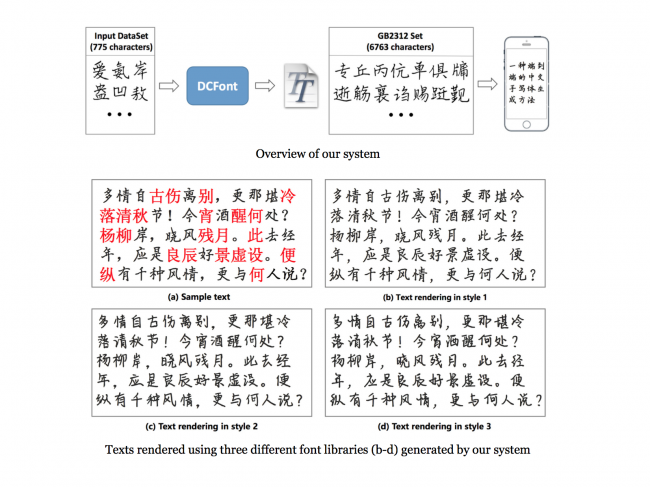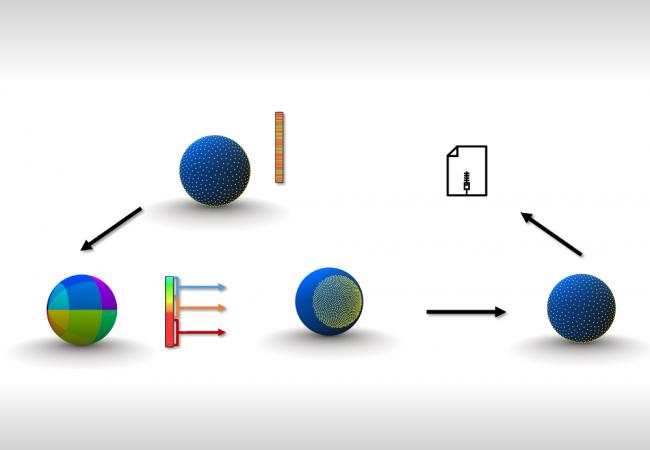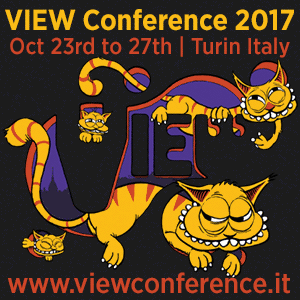 siggraph
siggraph
siggraph
siggraph
Methods and Applications
 Full Conference Pass
Full Conference Pass Full Conference 1-Day Pass
Full Conference 1-Day Pass
Date/Time: 28 November 2017, 02:15pm - 04:00pm
Venue: Amber 1
Location: Bangkok Int'l Trade & Exhibition Centre (BITEC)
Session Chair: Kevin (Kai) Xu, National University of Defense Technology (NUDT), China
Blue-noise Optimized Point Sets based on Procrustes Analysis
Summary: In this paper, we propose a new method for optimizing the blue noise characteristics of point sets. It is based on Procrustes analysis, a technique for adjusting shapes to each other by applying optimal elements of an appropriate transformation group. We adapt this technique to the problem at hand and introduce a very simple, efficient and provably convergent point set optimizer.
Author(s): Chavdar Papazov, Zuse Institute Berlin
Hans-Christian Hege, Zuse Institute Berlin
Speaker(s): Chavdar Papazov, Zuse Institute Berlin

Acquiring Non-parametric Scattering Phase Function from a Single Image
Summary: Acquiring accurate scattering properties is critical for rendering translucent materials such as participating media. In particular, the phase function, which determines the distribution of scattering directions, plays a significant role in the appearance of the material.While there are many techniques to acquire BRDF, there are only a few methods for the non-parametric phase function. We propose a distinctive scattering theory that approximates the effect of single scattering to acquire the non-parametric phase function from a single image. Furthermore, in various experiments, we measured the phase functions from several real diluted media and rendered images of these materials to evaluate the effectiveness of our theory.
Author(s): Yuki Minetomo, Nara Institute of Science and Technology
Hiroyuki Kubo, Nara Institute of Science and Technology
Takuya Funatomi, Nara Institute of Science and Technology
Mikio Shinya, Toho university / UEI Research
Yasuhiro Mukaigawa, Nara Institute of Science and Technology
Speaker(s): Yuki Minetomo, Nara Institute of Science and Technology

DCFont: An End-To-End Deep Chinese Font Generation System
Summary: Building a complete personalized Chinese font library for an ordi- nary person is a tough task due to the existence of huge amounts of characters with complicated structures. Yet, existing automatic font generation methods still have many drawbacks. To address the problem, this paper proposes an end-to-end learning system, DCFont, to automatically generate the whole GB2312 font library that consists of 6763 Chinese characters from a small number (e.g., 775) of characters written by the user. Our system has two major advantages. On the one hand, the system works in an end-to-end manner, which means that human interventions during o ine training and online generating periods are not required. On the other hand, a novel deep neural network architecture is designed to solve the font feature reconstruction and handwriting synthesis problems through adversarial training, which requires fewer input data but obtains more realistic and high-quality synthesis results compared to other deep learning based approaches. Experimental results verify the superiority of our method against the state of the art.
Author(s): Yue Jiang, Peking University
Zhouhui Lian, Peking University
Yingmin Tang, Peking University
Jianguo Xiao, Peking University
Speaker(s): Yue Jiang, Peking University

Fast Lossy Compression of 3D Unit Vector Sets.
Summary: We propose a new efficient ray compression method to be used prior to transmission in a distributed Monte Carlo rendering engine. In particular, we introduce a new compression scheme for unorganized unit vector sets (ray directions) which, combined with state-of-the-art positional compression (ray origin), provides a significant gain in precision compared to classical ray quantization techniques. Given a ray set which directions lie in a subset of the Gauss sphere, our key idea consists in mapping it to the surface of the whole unit sphere, for which collaborative compression achieves a high signal-over-noise ratio. As a result, the rendering engine can distribute efficiently massive ray waves over large heterogeneous networks, withe propose a new efficient ray compression method to be used prior to transmission in a distributed Monte Carlo rendering engine. In particular, we introduce a new compression scheme for unorganized unit vector sets (ray directions) which, combined with state-of-the-art positional compression (ray origin), provides a significant gain in precision compared to classical ray quantization techniques. Given a ray set which directions lie in a subset of the Gauss sphere, our key idea consists in mapping it to the surface of the whole unit sphere, for which collaborative compression achieves a high signal-over-noise ratio. As a result, the rendering engine can distribute efficiently massive ray waves over large heterogeneous networks, with pote potentially low bandwidth. This opens a way toward Monte Carlo rendering in cloud computing, without the need to access specialized hardware such as rendering farms, to harvest the latent horsepower present in public institutions or companies.
Author(s): Sylvain Rousseau, LTCI / Telecom-ParisTech / Université Paris Saclay
Tamy Boubekeur, LTCI / Telecom-ParisTech / Université Paris Saclay
Speaker(s): Sylvain Rousseau, LTCI, Telecom ParisTech, Paris-Saclay University


